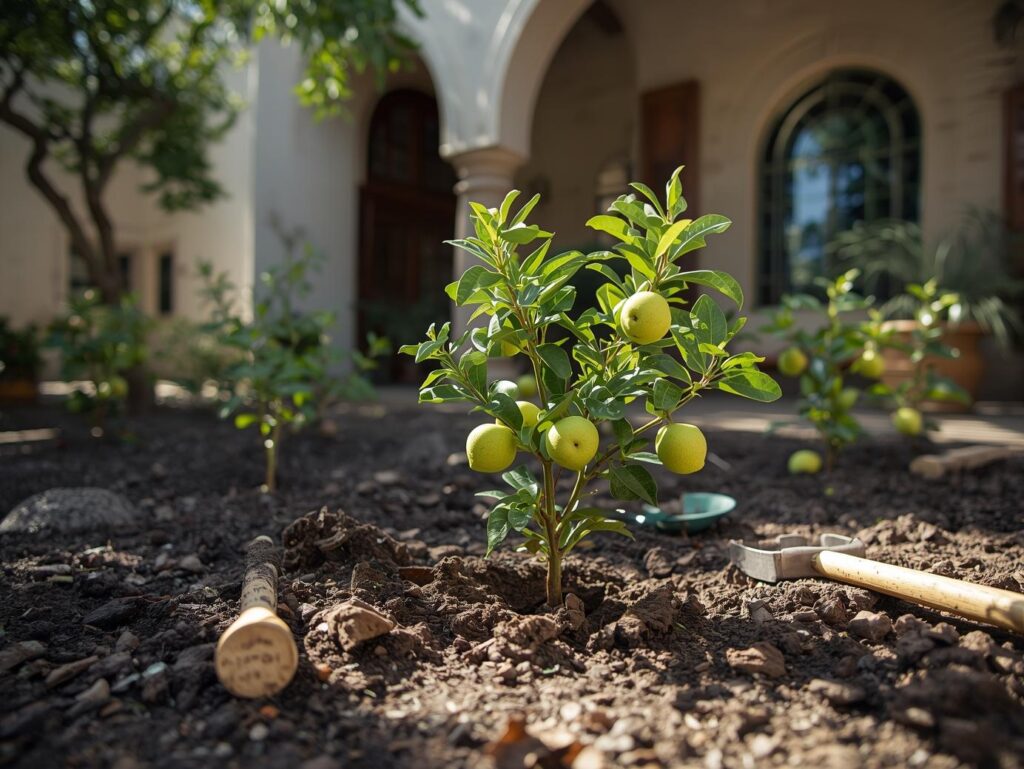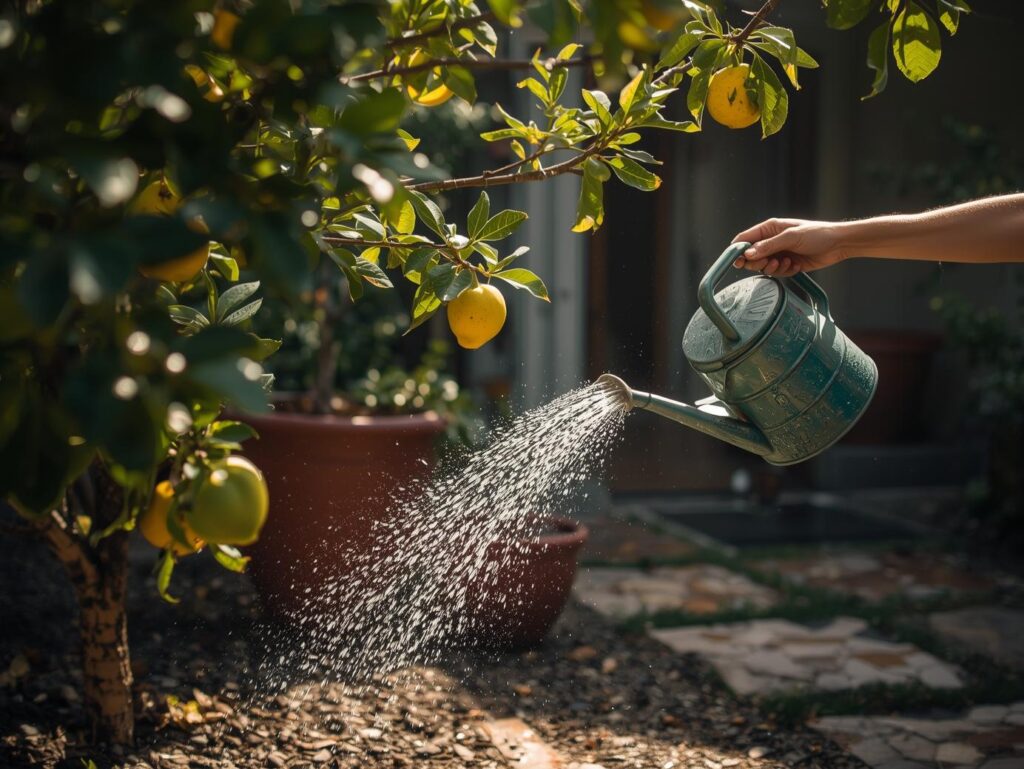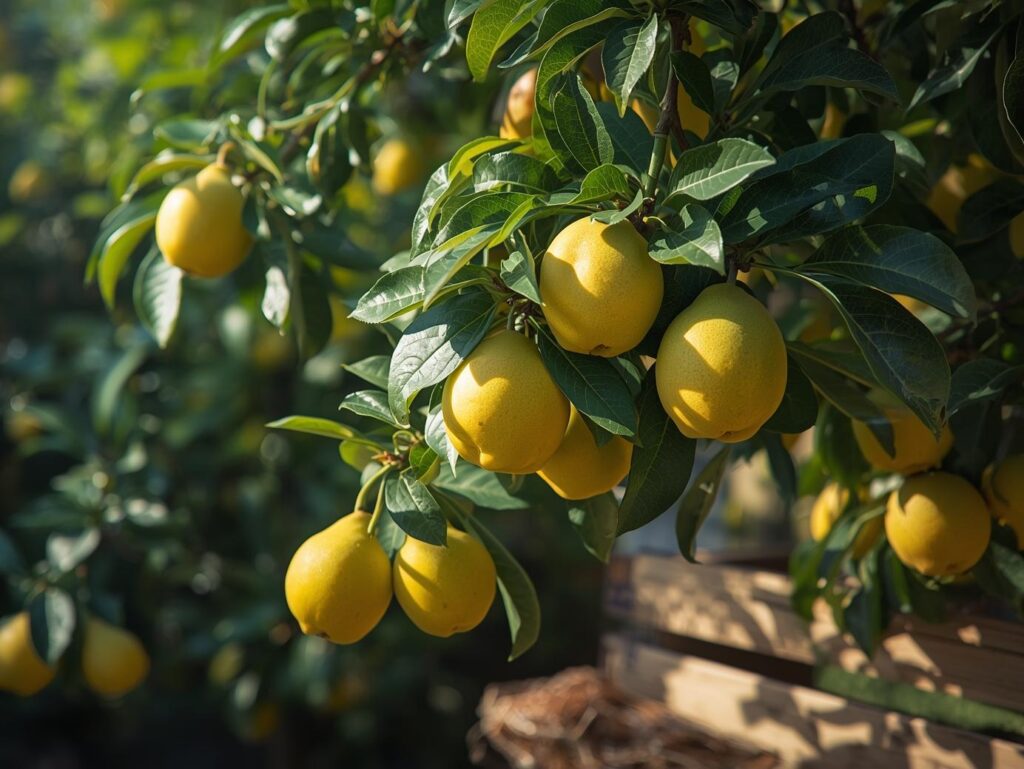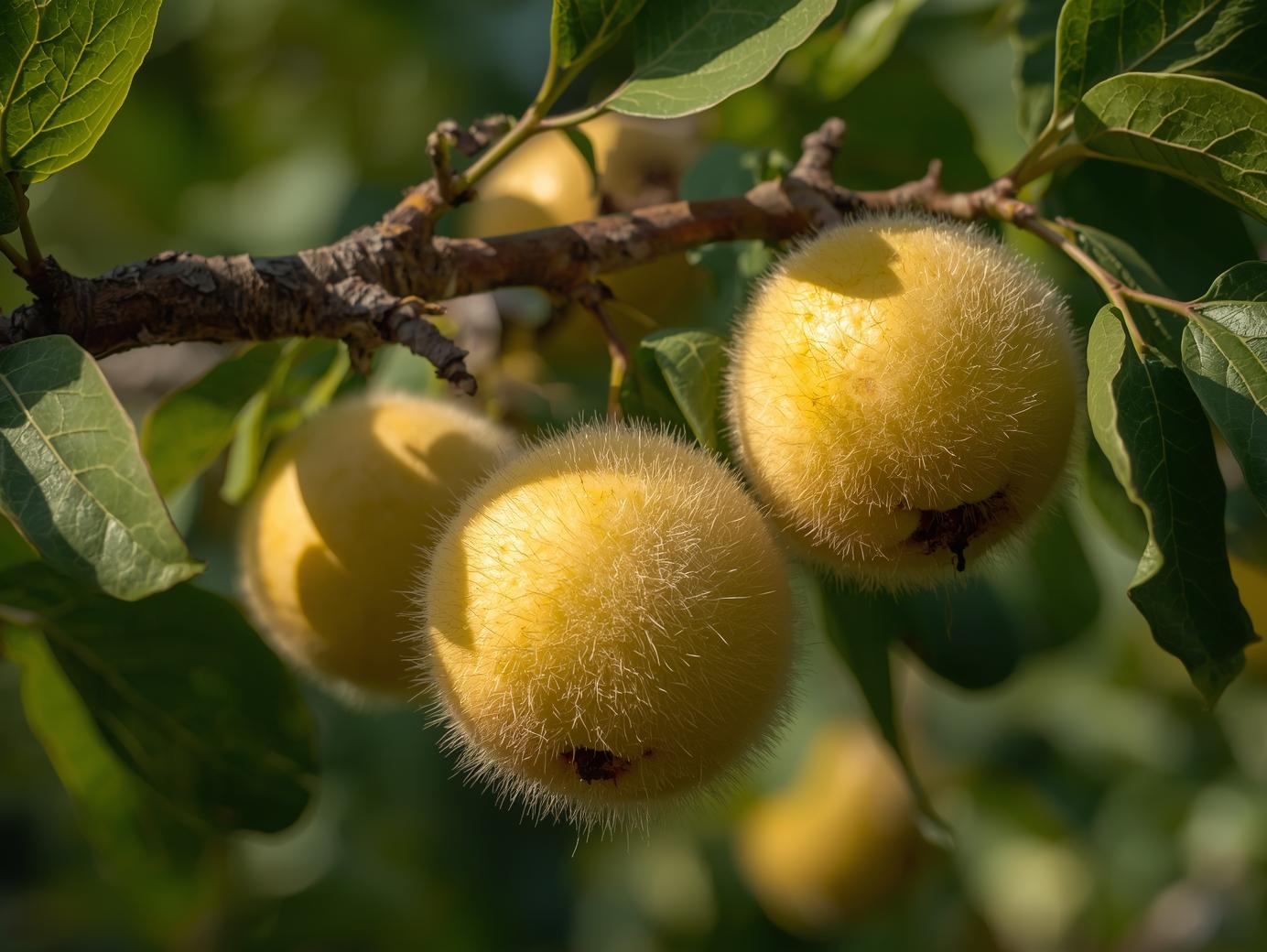Quince is an ancient fruit tree cherished for its fragrant, golden-yellow fruits and ornamental appeal. Often described as a cross between an apple and a pear, quince thrives in temperate climates across the USA and offers both aesthetic beauty and culinary value. The fruit is firm, aromatic, and ideal for jams, jellies, and baking. With proper care, quince can be a delightful addition to home courtyards, combining elegance with productivity.
Growing quince successfully requires attention to soil conditions, watering, pruning, and pest control. Whether you’re an experienced gardener or a beginner, understanding the specific needs of this tree ensures a healthy, long-lasting plant that rewards you with delicious fruit and a lovely garden presence year after year.
Soil Selection
Quince trees thrive best in well-drained, loamy soils rich in organic matter. The ideal soil pH ranges between 6.0 and 7.0, which provides the right balance of nutrients for strong root and fruit development. Avoid heavy clay soils or those prone to waterlogging, as excess moisture can cause root rot and stunt growth.
If your native soil is dense or poorly drained, improving it with compost, aged manure, or coarse sand enhances texture and fertility. Conducting a soil test before planting helps identify nutrient deficiencies and allows you to adjust accordingly. Healthy, fertile soil is the foundation for vigorous quince growth and abundant fruiting.
Site Preparation
Selecting the proper site is crucial for successful quince cultivation. Choose a sunny location that receives at least six to eight hours of direct sunlight daily. Adequate sunlight promotes healthy growth, improves flowering, and enhances fruit quality. Quince trees can tolerate mild frost but grow best in areas protected from harsh winter winds.
Before planting, clear the site of weeds, rocks, and debris. Loosen the soil to a depth of 12 to 18 inches, incorporating organic matter to improve structure and nutrient content. In small courtyards, quince can also be grown in large containers, provided there is sufficient drainage and the plant receives adequate sunlight throughout the day.
Planting
The best time to plant quince trees in the USA is in early spring or late fall when the weather is cool and the soil is moist. Choose disease-free, healthy saplings from a reputable nursery. Dig a hole twice as wide and just as deep as the root ball, allowing the roots to spread comfortably. Space multiple trees about 10 to 15 feet apart to ensure proper airflow and light penetration.

Set the tree in the hole so that the graft union, if present, is just above soil level. Backfill with the excavated soil, firm it gently, and water thoroughly to remove air pockets. Mulching around the base of the tree helps retain soil moisture, regulate temperature, and suppress weed growth during the establishment phase.
Watering
Consistent watering is key to establishing a healthy quince tree, especially during its first few years of growth. The soil should remain moist but never soggy, as overwatering can lead to root diseases. Deep watering once or twice a week encourages deep root development, making the tree more drought-tolerant as it matures.

During dry spells or in regions with hot summers, increasing watering frequency can help maintain steady growth. Mulching with organic materials such as wood chips or straw helps conserve moisture and keeps the soil temperature stable. Once the tree is established, it becomes relatively drought-tolerant but still benefits from regular watering during fruiting periods.
Fertilizing
Fertilization plays a vital role in quince tree development and fruit quality. In early spring, apply a balanced fertilizer with nitrogen, phosphorus, and potassium to promote healthy foliage and strong root growth. Over-fertilizing, especially with high-nitrogen products, should be avoided, as it can lead to excessive leaf growth and poor fruiting.
Organic fertilizers such as compost, fish emulsion, or aged manure are excellent options that provide slow-release nutrients and improve soil fertility. Applying fertilizer annually in spring and after harvest helps maintain steady nutrient levels. Regular soil testing ensures you’re providing the right nutrients in the proper amounts for optimal growth.
Pruning & Training
Pruning quince trees is essential for shaping the tree, improving air circulation, and encouraging fruit production. Pruning is best done during late winter when the tree is dormant. Remove dead, diseased, or crossing branches to maintain an open canopy that allows sunlight to reach the inner parts of the tree, which promotes even ripening and reduces pest problems.
Training young quince trees early helps establish a strong structure. Choose a central leader or open-center form depending on your garden space. Regular light pruning after the tree matures helps maintain its shape and prevents overcrowding. Proper pruning ensures higher fruit yields and healthier, longer-living trees.
Pest & Disease Control
Quince trees can be susceptible to pests such as aphids, scale insects, and codling moths, as well as diseases like fire blight, rust, and powdery mildew. Regular inspection of the tree helps identify problems early before they become severe. Maintaining good airflow through proper spacing and pruning reduces the risk of fungal diseases.
Organic pest control methods, such as neem oil or insecticidal soap, can be used to manage pests without harming beneficial insects. Removing fallen leaves and pruning infected branches helps prevent disease spread. Consistent monitoring and good sanitation practices are the best ways to keep your quince trees healthy year-round.
Fruiting & Harvest
Quince trees generally begin to bear fruit within three to five years after planting. The fruits mature in late fall, turning from green to a golden-yellow color when ripe. Ripe quinces are firm and aromatic, often harvested just before full ripeness, as they continue to ripen off the tree. Harvesting too early can result in hard, flavorless fruit, while overripe fruit may split or drop prematurely.

Handle quinces carefully during harvest, as bruised fruits do not store well. Store them in a cool, dry place where they can last for several weeks. Quince fruit is excellent for making jams, jellies, and desserts, and its sweet fragrance can fill your kitchen during cooking. With proper care, your quince tree will provide both beauty and bounty for many years to come.
